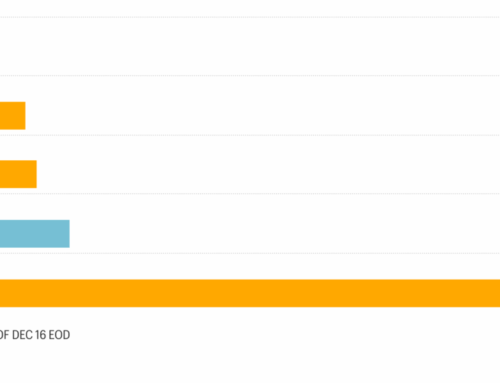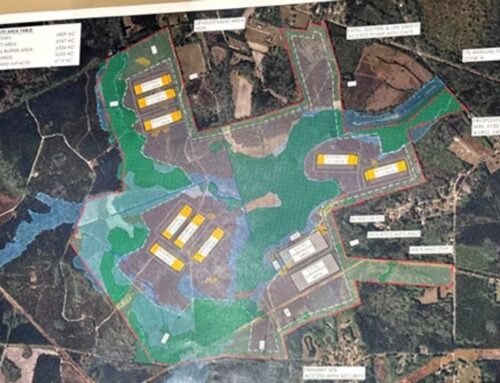Shedding Light on Solar Incentives—Why Property Owners Remain in the Dark
April 24, 2025
As the world grapples with climate change and seeks sustainable energy solutions, solar energy has emerged as a front-runner in renewable energy sources. Despite the numerous benefits associated with solar power, many property owners remain unaware of the federal, state and utility incentives available to them for installing solar panels. There are also many grant programs that property owners are not familiar with as well.
This article delves into the reason behind this oversight and highlights the importance of promoting awareness about solar incentives.
The Solar Energy Revolution
Over the past several decades, solar energy technology has transformed significantly, becoming more efficient and less expensive to produce. Much of this technology is driven by satellite deployment because satellites are powered by solar panels. The panels that are being installed today on rooftops are the panels that were being sent to outer space 10 years ago. Quite literally, that space-age solar panel technology is trickling down to the rooftop, today.

Consequently, according to the U.S. Dept. of Energy (DOE), the cost of solar photovoltaic systems has dropped by nearly 80% since 2009. This dramatic decrease in cost has made capturing solar energy a viable option for homeowners and business owners alike, promising reduced electric bills, increased property value, and a lower carbon footprint. Many organizations and companies are taking advantage of solar to meet their environmental, social, and governance (ESG) initiatives as well.
Above and beyond the reduction in cost of solar systems and other advancements in technology, the adoption of solar panels remains inconsistent. While some states have fully embraced solar energy, other states lag behind. A significant factor contributing to this disparity is the lack of awareness regarding the various financial incentives available to property owners.
Federal Investment Tax Credits (ITC)—A Closer Look
At the federal level, the Investment Tax Credit (ITC) stands out as a major driver for solar adoption in the U.S. This program allows property owners to deduct from 30%, 40%, 50% or 60% of their solar installation cost. The percentages vary based on several factors, however, ALL installations qualify at the minimum 30% direct “dollar-for-dollar” tax credit. Despite this remarkable benefit, many property owners are still oblivious to the existence or the implications of the federal ITC. Likewise, most CFOs and CPAs are completely unaware of how to take advantage of the federal ITC. The “dollar-for-dollar” federal tax credit can significantly reduce a company or individual’s federal tax liability.
In addition to the federal ITC, various federal loan and grant programs are offered to promote renewable energy systems. These little-known programs are offered through the DOE and the U.S. Dept. of Agriculture (USDA) and provide financial assistance for solar installations, particularly in energy deserts and rural areas. As mentioned previously, confusion surrounds the application process and the eligibility criteria which often deters property owners from seeking these resources.
State Level Programs: A Patchwork of Policies
The majority of states play a pivotal role in promoting solar energy throughout the myriad of incentives. From state tax credits to installation rebates to performance-based incentives, each state has its own approach to encouraging the adoption of solar technology. Energy production, transmission and delivery on a utility scale are regulated by state agencies, hence many states have unique incentive programs.
This patchwork of policies can create confusion for property owners. In some areas, aggressive marketing by solar panel companies tends to overshadow the available state government programs. As a result, many property owners might believe that they can only access financing through private contractors, neglecting the robust incentives offered at the state and utility level. Moreover, frequent changes in state level policies can lead to property owners struggling to keep up, leading to further gaps in the knowledge and understanding of the available resources on the state level.
The Role of the Utility
Utility incentives play a critical part in urging property owners to adopt solar energy. Many utility companies offer programs such as “net metering, which allows property owners to receive credit for excess energy produced by their solar panels, which is pumped into the grid. Effectively, the utilities want you to go solar; this alleviates stress on the utility grid and allows the utility to meet its renewable energy standard mandates.
Many utility companies provide upfront rebates for solar installations to ease the initial financial burden of installing solar for the property owners. The financial advantages and utility regulations can create confusion in understanding the benefits available to property owners. Many property owners find the utility-incentives landscape overwhelming, causing hesitation to engage with reputable solar installation companies. Utilities often allow landlords to install solar panels to produce power on their property (roof or ground-mount) and sell that power to their tenants under a power purchase agreement (PPA). This is a creative way for property owners to produce multiple additional revenue streams by implementing this PPA strategy.
Barriers to Awareness
Several factors contribute to the lack of awareness regarding solar incentives and how to maximize these programs for property owners, including:
Information Overload: The abundance of information available can be daunting, leading some property owners to give up trying to navigate the complexities.
Distrust in the Solar Industry: Some property owners may distrust solar companies, fearing hidden fees or aggressive sales tactics, which hinder them from seeking additional information.
Socio-Economic Factors: Income levels and socio-economic status may play a role in awareness, or a lack thereof. Lower-income communities may have less access to information and resources required for solar installations, resulting in missed opportunities.
Communication Gaps: Many local governments and utilities may not effectively promote the available incentives through the communities they serve leading to this knowledge gap. Many homeowners and commercial property owners also rely on social media to gather information about solar energy and the financial benefits of installing solar on their property. The information on social media is often misleading and not completely accurate.
Solutions to Bridge the Gap
In an effort to integrate solar energy into the everyday lives of property owners, this article emphasizes the importance of raising awareness of solar campaigns, which is critical. Federal and state governments along with utility companies and solar organizations must coordinate and collaborate for the following reasons:
- Simplify the language around incentives and the installation process;
- Create user-friendly digital platforms where property owners can access all the pertinent information on the solar incentives;
- Develop localized outreach programs that educate communities and property owners about the specific benefits and options available to them.
Ultimately, closing the knowledge gap concerning solar incentives could pave the way for greater solar adoption and a brighter more sustainable future.
General Incentives—Varies State to State
There are many incentives available to property owners, with the most benefits to commercial property owners. Here are some basic incentive programs that investors take advantage of to create additional revenue streams, reduce their tax liability, and increase the value of their property. (Author’s note: Always check your with your state, county, municipal, and local utility for specific details in your local service area.)
- Federal Investment Tax Credit (ITC) – From 30% up to 60% of the cost of the solar project.
- Solar Renewable Energy Certificates (SRECs) – Paid directly to clean energy producer.
- Mod. Accelerated Cost Recovery System (MACRS) – Depreciate 80% of the cost of solar.
- Net-Metering, Feed-in-Tariff, Power Purchase Agreements – All energy savings programs.
- Section 179 Building Deductions – Another accelerated depreciation program.
- Cost Segregation Study – Another sophisticated accelerated depreciation program.
- USDA & DoE REAP Grant Programs – Eligible property locations can receive 50% grant.
- Commercial Property Assessed Clean Energy (CPACE) – 100% financing for qualified projects.
There are other programs available for renewable energy projects. Consult with your tax professional for additional information on these and other available programs. Each building property will have unique conditions which could have an impact on the renewable energy programs available to that specific property.
Greenlight Energized Real Estate Model
Greenlight has developed a unique investment strategy for commercial property owners called the “Energized Real Estate” model. A building owner following this strategy will install an appropriately sized solar array to satisfy 100% of the annual electric bill of the tenant, whether that is the building owner, or a third-party tenant. By installing solar, the building now has a “solar power plant” that produces electricity. Hence, as an “energy producer,” the building owner now qualifies for all the available incentives for that particular building address. The building owner takes advantage of the federal, state, utility, and grant incentives, creating additional revenue streams for the property.
With the right information and encouragement, property owners can take the leap into renewable energy reaping multiple rewards of financial incentives while contributing to a cleaner planet. At the end of the day, property owners can significantly improve the value of their property, reduce their monthly variable expenses, taking advantage of the federal, state, and utility incentives available for solar energy projects.
—Carl G. Moose is director of the Solar Division at Greenlight Energy. You can email him at [email protected]
Search
RECENT PRESS RELEASES
Related Post




